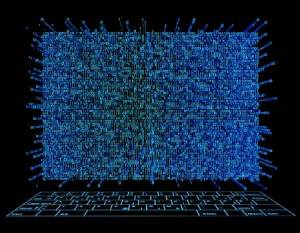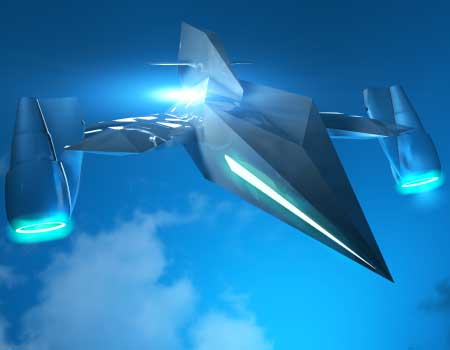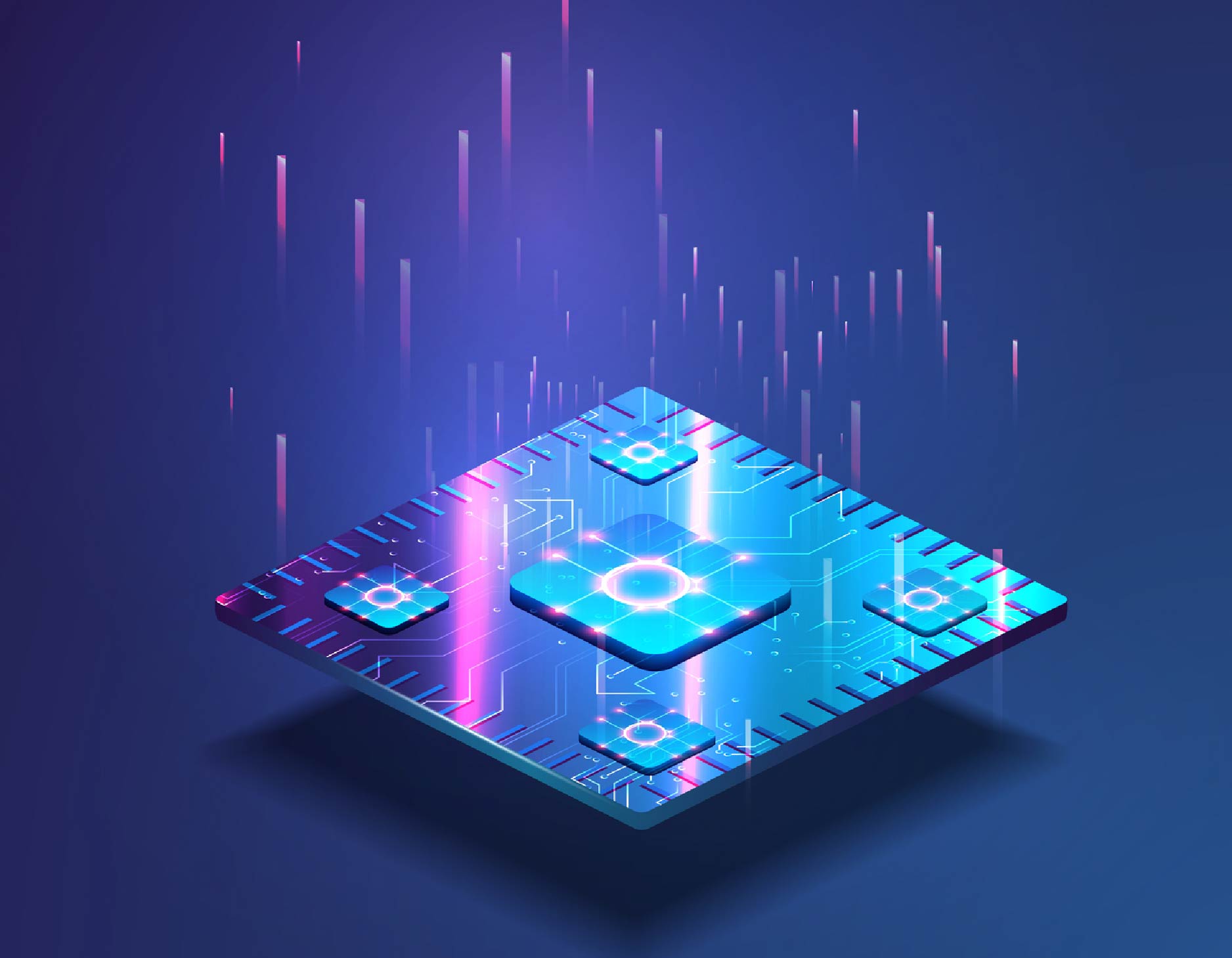DoD Critical Technology Areas (CTAs)

Advanced Computing & Software
Advanced computing and software technologies include supercomputing, cloud computing, data storage, computing architectures, and data processing. Software is ubiquitous throughout the Department, but the speed at which software develops outpaces the Department's ability to stay up to date. The Department must rapidly modernize its legacy software systems with resilient, affordable, and assured new software that has been designed, developed, and tested using processes that establish confidence in its performance. The Department must migrate to a Development-Security-Operations (DevSecOps) approach in its software development and evolve to a model of continuous development, continuous test, and continuous delivery. The Department must leverage modular open system architecture approaches to isolate hardware from software and enable rapid upgrades to secure processors.
Public Search Results | Learn more about Advanced Computing Software (Sign-In Required)

Advanced Materials
Advanced materials explore innovative new materials and novel manufacturing techniques that can dramatically improve many of the Department's capabilities. Materials that have higher strength, lighter weight, higher efficiency, and can handle more extreme temperatures will have the potential to better protect our service members and enhance their ability to accomplish their missions.
Public Search Results | Learn more about Advanced Materials (Sign-In Required)

Biotechnology
Biotechnology is an emerging engineering discipline that uses living systems to produce a wide range of technologies and capabilities. From fighting global pandemics and avoiding surprises to reducing logistics and sustainment costs and increasing energy efficiency, biotechnology can help change the way the Department conducts missions, performs in contested logistics environments, and adapts to major global changes.
Public Search Results | Learn more about Biotechnology (Sign-In Required)

Directed Energy
Directed Energy Weapons utilize lasers, high power microwaves, and high energy particle beams to produce precision disruption, damage, or destruction of military targets at range. Directed energy systems will allow the Department to counter a wide variety of current and emerging threats with rapid responses and engagement at the speed of light. High-power lasers and high-power microwave technologies both offer new ways to counter diverse sets of threats.
Public Search Results | Learn more about Directed Energy (Sign-In Required)

Human-Machine Interfaces
Human-Machine Interface refers to technologies related to human-machine teaming and augmented and virtual reality. Rapid advancements in this technology will have a multitude of benefits for our service members. Highly immersive realistic training environments provide real-time feedback to enhance warfighter performance. Intuitive 5 interactive human-machine interfaces enable rapid mission planning and mission command by providing a common operational picture to geographically distributed operations.
Public Search Results | Learn more about Human-Machine Interfaces (Sign-In Required)

Hypersonics
Hypersonic systems fly within the atmosphere for significant portions of their flight at or above 5 times the speed of sound, or approximately 3700 miles per hour. Hypersonics dramatically shorten the timeline to strike a target and increase unpredictability. While strategic competitors are pursuing and rapidly fielding advanced hypersonic missiles, the DoD will develop leap-ahead and cost-effective technologies for our air, land, and sea operational forces.
Public Search Results | Learn more about Hypersonics (Sign-In Required)

Integrated Network Systems of Systems
Integrated Network Systems of Systems technology encompasses the capability to communicate, provide real-time dissemination of information across the Department, and effective command and control in a contested electromagnetic environment. Integrated Network System-of-Systems capability must enable engagements by any sensor and shooter, with the ability to integrate disparate systems. An interoperable network that leverages emerging capabilities across the electromagnetic spectrum such as 5G, software defined networking and radios, and modern information exchange techniques will allow the Department to better integrate many diverse mission systems and provide fully networked command, control, and communication that is capable, resilient, and secure.
Public Search Results | Learn more about Integrated Network Systems of Systems (Sign-In Required)

Integrated Sensing & Cyber
To provide advantage for the joint force in highly contested environments, the Department must develop wideband sensors to operate at the intersection of cyber space, electronic warfare, radar, and communications. Sensors must be able to counter advanced threats and can no longer be stove-piped and single function.
Public Search Results | Learn more about Integrated Sensing & Cyber (Sign-In Required)

Microelectronics
Microelectronics are circuits and components that serve as the "brain" to human-made electronic functional systems. Virtually every military and commercial system relies on microelectronics. Diminishing microelectronics manufacturing in the United States and supply chain concerns have highlighted national economic and security risks. Working closely with industry, academia, and across the Government, the Department is addressing the need for secure microelectronics sources and will leverage state-of-the-art commercial development and production for defense microelectronic solutions.
Public Search Results | Learn more about Microelectronics (Sign-In Required)

Quantum Science
Quantum Science is the study of physical properties at small, even atomic, scales. Defense applications include atomic clocks, quantum sensors, quantum computing, and quantum networks. Quantum science promises to enable leap-ahead capabilities. Quantum computing can provide unprecedented computational speeds and help solve the Department's hardest analytical problems. Quantum sensors promise the ability to provide unprecedented accuracy in position, navigation, and timing. From more accurate information to faster decision making, to significantly stronger encryption capabilities, quantum science has the promise to deliver cutting-edge technology.
Public Search Results | Learn more about Quantum Science (Sign-In Required)

Renewable Energy & Storage
Renewable energy generation and storage includes solar wind, bio-based and geothermal technologies, advanced energy storage, electronic engines, and power grid integration. Renewable energy generation and storage promises to decrease warfighter vulnerability and deliver new operational capabilities for the Department. From more efficient batteries to diversifying energy sources and reduced fuel transportation risks, renewable energy generation and storage will add resilience and flexibility in a contested logistics environment.
Public Search Results | Learn more about Renewable Energy & Storage (Sign-In Required)

Space Technology
Space technologies include space flight, space communication and other technologies needed to maintain space operations. With rising threats and increasing dependence on space-based systems, the Department's space strategy must shift away from exquisite satellites to a more robust and proliferated architecture. Novel space technologies are necessary to enable resilient cross-domain operations. The space strategy must incorporate technologies that enhance the Department's adaptive and reconfigurable capabilities in space situational awareness, space control, communication path diversity, on-orbit processing, and autonomy.
Public Search Results | Learn more about Space Technology (Sign-In Required)

Trusted Artificial Intelligence & Autonomy
Artificial Intelligence (Al) is the software engineering discipline of expanding capabilities of software applications to perform tasks that currently require human intelligence. Machine learning is an engineering subfield of AI that trains software models using example data, simulations, or real-world experiences rather than by direct programming or coding. Autonomy is the engineering discipline that expands robots' abilities to perform tasks while limiting the need for human interaction. AI holds tremendous promise to improve the ability and function of nearly all systems and operations. Trusted AI with trusted autonomous systems are imperative to dominate future conflicts. As AI, machine learning, and autonomous operations continue to mature, the DoD will focus on evidence-based AI-assurance and enabling operational effectiveness.
Public Search Results | Learn more about Trusted Artificial Intelligence & Autonomy (Sign-In Required)

Future Generation Wireless Technology (FutureG)
FutureG is a suite of emerging wireless network technologies enabled by DoD and commercial industry cooperation to enable military operations and ensure a free and open internet. As Fifth Generation (5G) wireless technology is adopted and provides building blocks for capability, the DoD will also look to FutureG for leap-ahead technologies to lead in creating future standards. The Department will invest in FutureG technology development to lay the groundwork for continued United States leadership in information technology, which is vital for maintaining our economic and national security.
Public Search Results | Learn more about Future Generation Wireless Technology (FutureG) (Sign-In Required)
